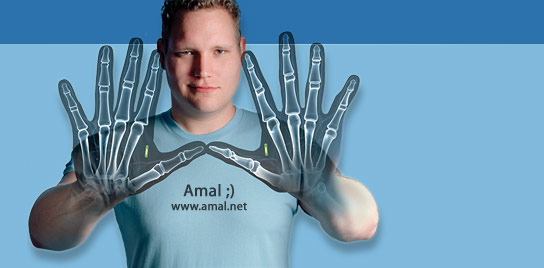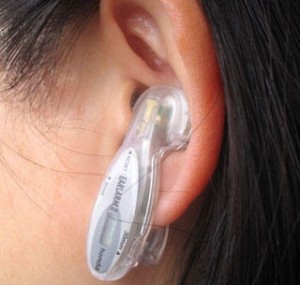Toward the end of 2007 I was working furiously on developing several aspects of the txtGroups company I launched back in 2005. I was pretty much a one man show, so developing new messaging platform features, marketing the service, managing accounts with content partners, etc. were all part of the collection of hats I wore. I had been making good progress, but it wasn’t enough to stay ahead of competitors, and the market in general. The bottom line was, I needed more time. I turned to the Uberman Sleep Schedule.
Ironically, I’m pretty tired right now, so I’ll cut to the chase. When I first discovered the Uberman Sleep Schedule in November 2005, it seemed like it was a rather new phenomenon… but polyphasic sleep is nothing new. I found this old recording of a 1991 PBS program that includes some rather painfully funny 1990s robotics technology in it, but also contains a segment completely about a polyphasic sleep study that was conducted. It’s a very interesting segment because it not only shows that it’s totally possible, it also covers some scientific testing of the effects of maintaining a polyphasic sleep schedule.
First, I bought two in-ear alarms and put one in each ear.
I set them both to go off after 25 minutes and after staying up 3 days straight, took my first 20 minute nap. If you’re not trying to get into a polyphasic sleep schedule, they are quite piercing when they both go off at the same time… but when you’re going through the first few weeks trying to slip into polyphasic, they will sound like very distant sirens and it still takes quite an effort to wake up when you hear them go off.
Second, if you smoke, drink, or consume caffeine, you’ll need to really change your diet before attempting this. Otherwise you will never be able to keep the schedule up. All those things mess with your metabolism and ultimately your built in “I’m tired” sensors. I only had to tone down my caffeine intake, which was easy because I really like root beer, which doesn’t contain caffeine.
Third, you will have to take a 20-25 minute nap every 3.5 hours or so. Below is the nap schedule I tried to adhere to. You’ll notice there is no AM/PM designation because that becomes meaningless while on this sleep schedule.
- 12
- 1
- 2
- 3 *sleep
- 4
- 5
- 6
- 7 *sleep
- 8
- 9
- 10
- 11 *sleep
Depending on your social schedule, it can be quite awkward at times. If you are woken up during your nap, or miss a nap by more than 30 minutes or so, you will most likely crash and have to go back to a monophasic sleep schedule. This process takes a few days, during which you’ll wish you were dead. What you are doing by shortening your sleep sessions to such a short time period is force your brain to immediately hit REM sleep first, rather than at the end of a normal 90 minute sleep cycle. The end result is that you get your most important sleep phase first (REM), then the others follow suit. The interesting thing to note is that the percentages of each phase in a single 20-25 minute cycle is the same as an 8 hour sleep session.
The most amazing effect of polyphasic sleep, aside from getting copious amounts of work done, is that you lose track of what day it is. Day and night no longer hold meaning… and neither does “tomorrow”. You can’t say “I’ll do that tomorrow” because tomorrow is never more than 3.5 hours away. You’ll cling to your schedule more tightly because you need to keep in mind that certain things can only be done during the “day”. You’ll find yourself wondering why you can’t renew your drivers license at 3:55am.
Working out doesn’t pose much of a problem, nor does healing scrapes and cuts. Everything proceeds as normal, except it seems like it takes longer. It only seems like it takes longer because you’re awake for most of it, where normally you’d sleep through 7-8 hours of the healing process. If you work out and have sore muscles for a couple days, you normally sleep through a total of 16 hours of that process… whereas in polyphasic sleep you only sleep through a fraction of that total healing time… so it feels longer.
If you aren’t interested in radically changing your sleep schedule, you might want to just wake up feeling ready to rock every single morning.
These days I use a sleep tracker watch. It works by monitoring your sleep patterns and waits for a REM sleep phase to occur within an alarm time window. As your REM cycle ends, the alarm goes off and wakes you up. This is the best way to wake up as you are instantly ready to go. Having an alarm go off during any other sleep phase will make you feel like death warmed over and you’ll be sluggy all day. It works great for me, but it monitors your REM cycle by feeling for very tiny muscle vibrations given off during REM, so if your bed has another tossy turny sleeper or pets that fidget around a lot, the watch won’t be able to accurately identify your REM cycle and it’s rather quiet alarm will go unnoticed because you’ll probably be in a different very deep sleep phase when it goes off.
Tags: health














[…] wonder if this could be combined with the Uberman Sleep Schedule I call upon from time to time to create a truly efficient work schedule based on minimal sleep. Share this on […]
A mate urged me to check out this page, brill post, fanstatic read… keep up the cool work!